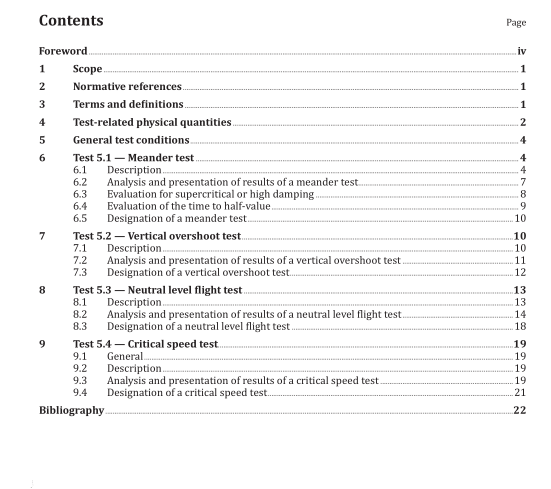ISO 13643-5:2013 pdf download.Ships and marine technology — Manoeuvring of ships — Part 5: Submarine specials
This part of ISO 13643 defines symbols and terms and provides guidelines for the conduct of tests to give evidence about the manoeuvring ability in the vertical plane of submarines and models. It is intended to be read in conjunction with ISO 13643-1.
2 Normative references
The following documents, in whole or in part, are normatively referenced in this document and are indispensable for its application. For dated references, only the edition cited applies. For undated references, the latest edition of the referenced document (including any amendments) applies.
ISO 13643-1, Ships and marine technology — Manoeuvring of ships — Part 1: General concepts, quantities and test conditions
3 Terms and definitions
For the purposes of this document, the following terms and definitions apply.
3.1 meander test manoeuvring test to establish a submarine’s manoeuvring characteristics and to verify the submarine’s dynamic stability in the vertical plane 3.2 vertical overshoot test manoeuvring test to determine the effectiveness of the stern planes when initiating and terminating changes of depth 3.3 neutral? level? flight? test manoeuvring test to determine the trim angle and the hydroplane angles at which the submarine maintains a constant dived depth at any given speed during submerged operation
Note 1 to entry: Neutral level flight is obtained
— for submarines with retracted bow planes by using a definite trim angle and a definite angle of stern planes, and
— for submarines with non-retractable bow planes, by using definite angles of the bow and stern planes for arbitrary trim angles (preferably θ S = 0°).
3.4 critical speed test manoeuvring test to determine the speed at which the effect of the hydroplanes is reversed during submerged operation
4 Test-related physical quantities
Test-related physical quantities are according to Table 1; general quantities and concepts are according to ISO 13643-1.
5 General test conditions In addition to the general test conditions outlined in ISO 13643-1, the following specific test conditions shall be complied with.
— During the test, including the approach phase, each successive position of the ship shall be recorded at suitable time intervals (usually every second).
— The submarine shall be trimmed according to the results of the neutral level flight test (see Clause 8).
— Dived depth and water depth shall be sufficient (a clearance of at least one boat’s length to the surface and to the bottom shall be maintained). For model tests, surface and bottom effects shall be excluded by the use of suitable measures.
— The bow plane angle shall remain unaltered.
— There shall be no relocation of mass (e.g. due to movements of the crew) during the conduct of any test. Unavoidable shifts of mass are to be compensated and recorded.
6.1 Description A series of tests for different initial speeds must be conducted since damping and time constants of the motion of the submarine are speed dependent, and a boat that proves to be stable at low speeds may become unstable at higher speeds. For safety reasons, the series of tests shall be commenced with a low initial speed, V 0 . The submarine shall approach on a steady speed, V 0 , before commencing the test. During the test, the propulsion plant settings must remain unaltered and the heading kept as constant as possible. Heading and rudder movements shall be recorded throughout the test (ideally, at intervals of 1 s). If the submarine is equipped with planes acting simultaneously in the horizontal and the vertical directions (e.g. X-planes), these planes should be controlled in such a way that a steady heading is maintained as a matter of priority. After the submarine has been moving ahead for at least two minutes without significant movements of rudder and planes, the stern planes are set to the specified test stern plane angle, Δδ Si , as fast as possible and must be held there until the trim angle has deviated from the initial trim angle, θ S0 , by the specified execute change of trim angle, Δθ E . At this point, the stern planes are reversed to the initial position and held until the test is completed.ISO 13643-5 pdf download.ISO 13643-5-2013 pdf download
